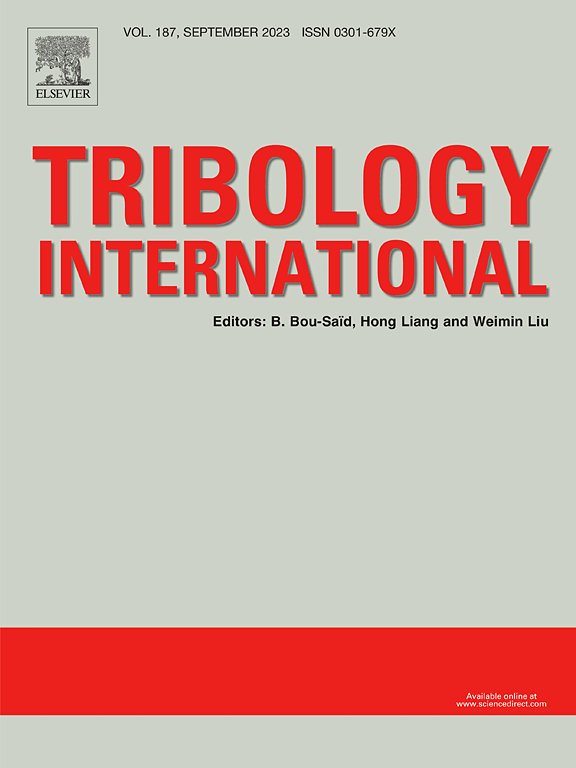轮轨接触的热力有限元建模及实验验证
IF 6.1
1区 工程技术
Q1 ENGINEERING, MECHANICAL
引用次数: 0
摘要
在列车运行过程中,轮轨界面会产生摩擦热,特别是在加速和制动时的高滑移率下。热效应可以加速磨损,诱发塑性变形,并导致热疲劳。考虑摩擦引起的热效应的可靠的轮轨接触建模是准确预测轮轨界面退化的必要条件。已经提出了几种分析和数值模型来模拟热或热机械轮轨载荷,但很少得到验证,特别是在闪变温度超过200°C的高滑移率情况下。本研究开发并实验验证了高滑移比条件下接触温度达到360°C的三维热机械有限元(FE)轮轨接触模型。该模型包含了关键的力学参数,包括车轮载荷、摩擦系数和滑移率。模拟轨道表面温度在不同滑移率(5 %,10 %和15 %)下与机载红外热像仪测量的闪光温度进行了比较,显示出良好的一致性,最大偏差为9.9% %。这证实了该模型用于模拟热效应下轮轨接触的可靠性。本文章由计算机程序翻译,如有差异,请以英文原文为准。
Thermomechanical finite element modelling of wheel-rail contact and experimental validation
Frictional heat is generated at the wheel-rail interface during train operations, particularly under high slip ratios during acceleration and braking. Thermal effects can accelerate wear, induce plastic deformation, and contribute to thermal fatigue. Reliable modelling of wheel-rail contact that considers friction-induced thermal effects is desirable for the accurate prediction of wheel-rail interface deterioration. Several analytical and numerical models have been proposed to simulate thermal or thermomechanical wheel-rail loads but have rarely been validated, especially in high slip ratio scenarios where flash temperatures exceed 200 °C. This study develops and experimentally validates a three-dimensional thermomechanical finite element (FE) wheel-rail contact model for high slip ratio conditions, with contact temperatures reaching 360 °C. The model incorporates key mechanical parameters, including wheel loads, coefficients of friction, and slip ratios. Simulated rail surface temperatures across various slip ratios (5 %, 10 %, and 15 %) are compared with the flash temperatures measured with an onboard infrared thermal camera, showing good agreement with a maximum deviation of 9.9 %. This confirms the reliability of the model for simulating wheel-rail contact under thermal effects.
求助全文
通过发布文献求助,成功后即可免费获取论文全文。
去求助
来源期刊

Tribology International
工程技术-工程:机械
CiteScore
10.10
自引率
16.10%
发文量
627
审稿时长
35 days
期刊介绍:
Tribology is the science of rubbing surfaces and contributes to every facet of our everyday life, from live cell friction to engine lubrication and seismology. As such tribology is truly multidisciplinary and this extraordinary breadth of scientific interest is reflected in the scope of Tribology International.
Tribology International seeks to publish original research papers of the highest scientific quality to provide an archival resource for scientists from all backgrounds. Written contributions are invited reporting experimental and modelling studies both in established areas of tribology and emerging fields. Scientific topics include the physics or chemistry of tribo-surfaces, bio-tribology, surface engineering and materials, contact mechanics, nano-tribology, lubricants and hydrodynamic lubrication.
 求助内容:
求助内容: 应助结果提醒方式:
应助结果提醒方式:


